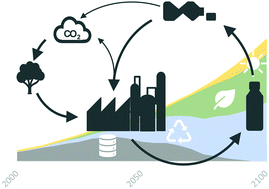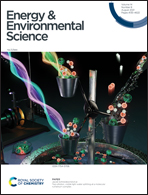Towards circular carbo-chemicals – the metamorphosis of petrochemicals
Abstract
The petrochemical industry grew to become one of the world's largest industries during the 20th century. It is expected that it will continue to grow, as the world's population gets wealthier, social dynamics change and people demand more affordable and useful materials. The industry recognises that the Earth's carrying capacity is limited. It is adapting to seek to become a truly sustainable ‘carbo’-chemical industry. This paper will address the three main challenges of this transition: shifting hydrocarbon stock, climate change and circular economy. As the energy sector transitions from oil, coal and eventually natural gas, it is expected that the chemical industry will have access to abundant hydrocarbon stocks for which it can find valuable uses. But rising CO2 prices and increasing upgrading costs will likely encourage greater use of alternative, low-carbon feedstocks. In particular, there may be a development of biomass for manufacturing oxygenated chemical intermediates and bio-based materials. To help tackle climate change, the industry will need to reduce the CO2 emissions of its processes and utilities (energy sources). Ways to achieve this will include efficiency improvements, electrification of utilities and processes and switching to renewable H2; upgrading by-products to chemicals; and CO2 capture and storage or utilisation (CCS/CCU). The issue of plastic waste pollution is combining with the challenges discussed above to push society and governments towards a more circular economy. Customer demand for sustainable products is growing. New regulations (and technologies) are being rolled out for waste collection, sorting and recycling. In addition, the industry is making pledges to produce and use more sustainably. However, it is expected that fresh carbon will still have to enter the material cycle. It will be needed to feed the growth of the chemical industry and to compensate for inevitable recycling losses. For a truly circular industry, this fresh carbon would come from a renewable source, i.e. from atmospheric CO2, initially via biomass and later possibly from direct CO2 capture and utilisation (CCU).

- This article is part of the themed collection: A collection of papers from RSC journals on chemistry and the circular economy


 Please wait while we load your content...
Please wait while we load your content...